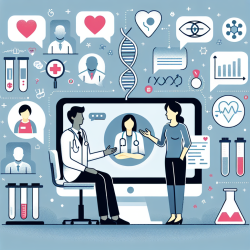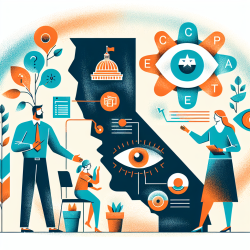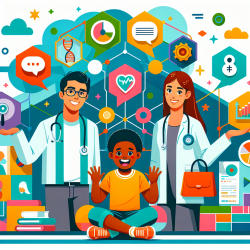Introduction
In the realm of clinical research, the complexity of scientific concepts often poses significant challenges for both practitioners and study participants. The article "Developing a consensus-driven, plain-language clinical research glossary for study participants and the clinical research community" addresses these challenges by proposing a plain-language glossary aimed at enhancing comprehension and engagement in clinical research. This initiative is particularly relevant for practitioners in speech-language pathology, where clear communication is vital for effective therapy and patient outcomes.
The Importance of Plain Language
Plain language is a cornerstone of health literacy, which supports ethical principles such as respect, justice, and beneficence in clinical research. By simplifying complex terms, practitioners can foster better understanding and collaboration with study participants, ultimately leading to improved adherence and outcomes. The glossary developed by the Multi-Regional Clinical Trials Center (MRCT) aims to bridge the gap between technical jargon and patient-friendly language, making clinical research more accessible to all stakeholders.
Implementing the Glossary in Practice
For speech-language pathologists, integrating the glossary into practice can enhance communication with clients and caregivers. Here are some practical steps to implement the glossary:
- Educate Yourself: Familiarize yourself with the glossary and its definitions to improve your understanding of clinical research terms.
- Use in Communication: Incorporate plain-language definitions when discussing research studies or interventions with clients and their families.
- Advocate for Clarity: Encourage the use of plain language in all clinical and educational materials to ensure accessibility for all clients.
Encouraging Further Research
While the glossary provides a solid foundation, continuous research and development are essential for its expansion and refinement. Practitioners are encouraged to contribute to this ongoing effort by:
- Providing Feedback: Share your experiences and suggestions for improvement with the MRCT Center to enhance the glossary's utility.
- Participating in Studies: Engage in research projects that focus on health literacy and plain language to contribute to the evidence base.
- Collaborating with Peers: Work with other professionals to promote the adoption of plain language in clinical settings.
Conclusion
The development of a plain-language clinical research glossary represents a significant step towards improving communication and understanding in clinical research. By adopting this resource, practitioners can enhance their skills and contribute to better outcomes for children and other study participants. To explore the original research paper, please follow this link: Developing a consensus-driven, plain-language clinical research glossary for study participants and the clinical research community.










